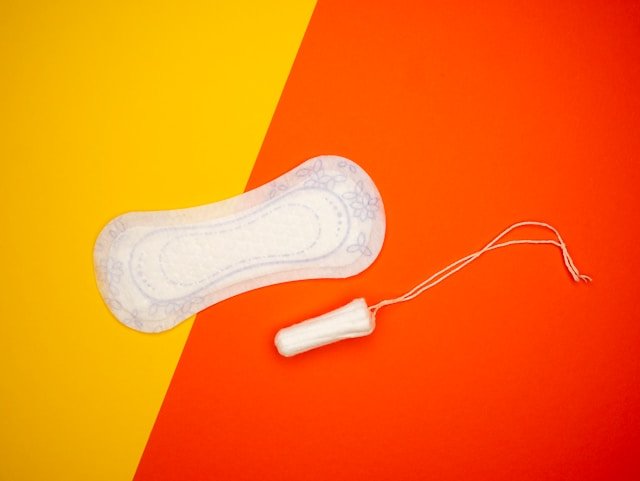
For many people the menstrual cycle is a recurring a part of life. But, its emotional and psychological toll typically flies below the radar. We’re fast to acknowledge bodily premenstrual signs similar to bloating and cramps, however what in regards to the temper swings, emotional lows, or moments when every part feels overwhelming? These emotional shifts are usually not a weak point, however signs of a systemic blind spot in healthcare and public understanding. These shifts, which might vary from delicate irritability to extreme depressive episodes, are greater than “simply hormones”. They’re respectable challenges that affect psychological well being, relationships, and day by day functioning in profound methods (Dennerstein et al., 2012).
In case your cycle has ever made you are feeling such as you’re spiralling, you’re not alone. Analysis signifies that as much as 90% of ladies expertise premenstrual signs, with practically half (48%) assembly the factors for premenstrual syndrome (PMS). For 3-8%, it’s extra extreme, manifesting as premenstrual dysphoric dysfunction (PMDD) –a situation linked to vital psychological well being dangers, together with suicidal ideation and makes an attempt (Sattar, 2014; Prasad et al., 2021).
Regardless of this, stigma and silence persist, particularly round asking for assist, and menstrual psychological well being is usually dismissed (Winchester, 2021). Societal expectations urge girls to “push by means of”, whereas healthcare techniques typically fail to supply sufficient assist (Osborn et al., 2020; Matthews et al., 2023).
A latest examine by Funnell et al. (2024) sheds mild on this situation, revealing the rising reliance on casual options, similar to on-line assets. However is scrolling by means of symptom checkers and Reddit threads actually sufficient assist for situations as critical as PMDD? Ought to we be settling for this, or ought to we demand extra?

Regardless of being a typical expertise, the psychological well being affect of the menstrual cycle is usually minimised or dismissed, leaving many to silently battle.
Strategies
To discover how menstrual cycles have an effect on psychological well being, the researchers ran an on-line survey throughout the UK. The examine aimed to look at the connection between premenstrual signs and psychological well-being whereas exploring help-seeking behaviours.
A complete of 578 members have been recruited through social media platforms together with Fb, Instagram, Twitter, Reddit, and the Cambridge Centre for Neuropsychiatric Analysis. The inclusion standards have been:
- 18 years or above
- UK resident
- Not pregnant or breastfeeding
- Menstruating and self-identify as premenopausal
- Reporting psychological well being points linked to cycle.
After knowledge screening, 530 responses have been analysed. Individuals supplied demographic particulars, accomplished assessments of their psychological well being (utilizing the Premenstrual Signs Screening Instrument and Warwick Edinburgh Psychological Wellbeing Scale), and shared their assist searching for habits and preferences for utilizing digital know-how to handle cycle-related psychological well being considerations. This concentrate on each formal and casual assist pathways presents priceless perception into how individuals navigate care within the absence of sufficient scientific recognition. Based mostly on their scores, members have been categorized into three teams: No/Delicate PMS, Reasonable to extreme PMS, and PMDD. Researchers then analysed group variations to uncover traits and insights.
Outcomes
Prevalence and affect of signs
The findings revealed that premenstrual signs have been common amongst members, with 97.17% reporting that these signs interfered with their day by day lives. Fatigue stood out as probably the most reported extreme symptom (36.23%), whereas useful impairments have been extra widespread however most pronounced in work (83.4%) and romantic relationships (15.85%).
Psychological well being traits
Individuals’ general psychological well-being, measured by the Warwick Edinburgh Psychological Wellbeing Scale, averaged 40.95, with considerably decrease scores within the PMDD group (36.62). A one-way ANOVA confirmed substantial group variations (p<.001). Bodily signs, similar to breast tenderness and complications, have been reported by 96.42% of members, whereas psychological signs, together with anger and irritability have been famous by 95.85%.
The PMDD group confronted probably the most extreme challenges, experiencing signs like despair, tearfulness, and heightened sensitivity to rejection (70.91%). This group additionally reported the best useful impairments, particularly in romantic and intimate relationships (58.18%). Reasonable to extreme PMS brought on vital disruptions however much less debilitating than PMDD. The next desk highlights key variations between teams.
| Group | Most endorsed Symptom | Most Extreme Symptom | Most affected Space of Life |
| No/Delicate PMS | Bodily signs (93.02%) | Fatigue/ Lack of vitality (11.5%) | Work/Research (68.02%) |
| Reasonable to Extreme PMS | Anger/ Irritability (65.32%) | Fatigue/ Lack of vitality (40.73%) | House tasks (95.15%) |
| PMDD | Nervousness/ Rigidity (100%) | Depressed temper/ Hopelessness, Tearfulness/ Elevated sensitivity to rejection (70.91%) | Romantic/ Intimate relationships (58.18%) |
Assist-seeking traits
Symptom severity strongly influenced help-seeking behaviours, with 64.91% of members searching for assist by means of formal healthcare suppliers (HCP), on-line assets, or a mixture of each. Whereas 35.09% consulted HCP for cycle-related psychological well being considerations, 57.7% turned to on-line assets. This may occasionally counsel that for a lot of, digital areas have grow to be the primary (or solely) type of assist. Blended help-seeking was commonest among the many PMDD group (55.45%), in comparison with average to extreme PMS (12.79%) and no/delicate PMS (25.81%). Notably, 52.33% of the no/delicate PMS group didn’t search any assist.
On-line assets and HCP experiences
On-line help-seeking was frequent, with members looking for info on psychological well being signs associated to the menstrual cycle (85.57%), therapy choices (39.67%), psychological well being checks (34.43%), and apps (33.44%). The PMDD group was notably extra energetic in searching for on-line assist. Nevertheless, solely 21.5% of members who consulted HCP felt adequately supported, and 45.16% reported feeling dismissed. Regardless of these findings, there have been no vital variations within the perceived high quality of HCP consultations.

Almost all members reported life disruptions resulting from premenstrual signs, with fatigue and useful impairments being commonest.
Conclusions
This survey examine reinforces the numerous hyperlink between premenstrual signs, diminished psychological well-being, and disruptions in day by day functioning.
It additionally highlights the rising reliance on on-line assets for managing menstrual psychological well being considerations, presenting alternatives for creating efficient instruments. But it additionally warns of the dangers of counting on unregulated digital content material, particularly when formal care leaves so many feeling unheard.
Limitations to help-seeking, whether or not by means of HCP or on-line searches, stay a priority, as many members avoided searching for assist. Moreover, detrimental care experiences with HCP, as famous in prior analysis (Osborn et al., 2020), reveal a necessity for improved consciousness, coaching, and person-centred care in addressing menstrual psychological well being challenges.
Future options should transcend consciousness; they have to construct accessible, credible, and compassionate pathways to care.

Premenstrual signs are deeply linked to psychological well being challenges, and the rise in digital self-help underscores healthcare system gaps.
Strengths and Limitations
This examine delves into the connection between premenstrual signs, well-being, and help-seeking behaviours, addressing a notable hole in analysis. By analyzing a variety of things together with symptom varieties, severity, useful impairments, and each formal and casual help-seeking pathways, the examine improves our understanding of how premenstrual signs disrupt on a regular basis life, affecting work, relationships, and family tasks, and shaping people’ help-seeking behaviours.
One of many standout options is the concentrate on PMDD, a debilitating but underdiagnosed and under-researched situation. PMDD’s extreme bodily and emotional signs makes it a key space for additional consideration. Moreover, the findings present well timed insights into how people navigate the digital panorama for psychological well being assist.
Nevertheless, the examine has limitations:
- Absence of a management group: With out members unaffected by cycle-related psychological well being points, it’s tough to isolate the affect of premenstrual signs from different life stressors.
- Self-reported knowledge: Reliance on members’ self-reported signs and help-seeking behaviours might result in recall or social desirability bias, elevating considerations in regards to the accuracy of diagnoses and the potential of under-reporting or over-reporting signs.
- Restricted generalisability: The pattern lacked range, because it was predominantly white (94.15%), well-educated (37.74% postgraduates), and better incomes (above £35k). This restricts the findings’ applicability to extra various populations with totally different cultural attitudes and entry to care. Moreover, the UK setting additional limits applicability to international locations with totally different healthcare techniques. Recruitment through social media might have additional skewed the pattern, over-representing people who’re digitally literate and extra more likely to search assist on-line.
- Cross-sectional design: By capturing solely a snapshot of experiences through a web-based survey, the examine misses the fluctuating nature of signs, which can differ with hormonal phases, stress, or way of life modifications. For instance, members within the luteal section typically report elevated signs like anxiousness (Useful et al., 2022). A longitudinal method would supply richer insights, monitoring how signs and help-seeking behaviours evolve over time, offering a extra complete understanding of those advanced experiences.

The examine presents important insights into menstrual psychological well being and help-seeking however is proscribed by its lack of range, self-report knowledge, and cross-sectional design.
Implications for apply
This examine offers insights into the psychological well being challenges related to the menstrual cycle, notably the affect of PMDD and extreme PMS. The findings emphasise the numerous toll of those situations on day by day life, relationships, and work, whereas exposing gaps in healthcare assist that drive many to depend on casual on-line assets. This offers actionable insights for bettering healthcare interventions.
A key implication is the pressing want for higher consciousness and coaching amongst healthcare professionals. The discovering that solely 21% of people searching for formal care felt adequately supported factors to vital data and sensitivity deficits within the healthcare system. PMDD, for instance, is usually underdiagnosed or mistaken for situations like Bipolar Dysfunction (Studd, 2012). Equipping HCP with diagnostic instruments and focused training is important to tell apart menstrual-related psychological well being points from different psychiatric situations, enabling well timed and efficient care.
The rising function and potential of digital instruments to bridge care gaps is one other helpful discovering. Symptom monitoring apps, telehealth platforms, and psychoeducational content material have the potential to sort out obstacles like stigma, geographic limitations, and time constraints (Firth et al., 2017). Nevertheless, the examine raises considerations in regards to the reliability of present on-line assets. As an example, the absence of a NHS webpage devoted to PMDD highlights a vital hole, particularly given its trusted standing within the UK (Division of Well being and Social Care, 2022). Creating accessible, evidence-based on-line assets might assist people higher perceive their signs and facilitate knowledgeable selections about searching for care. Nonetheless, digital options ought to complement–not substitute–in person-care, notably for extreme instances that require in-person therapy.
Inclusivity is one other urgent consideration. The examine’s predominantly WEIRD (White, Educated, Industrialised, Wealthy, and Democratic) pattern overlooks the distinctive obstacles confronted by marginalised teams, similar to stigma, monetary constraints, and cultural variations (O’Donnell et al., 2016). Increasing future analysis to embody various populations is important for creating culturally delicate interventions and guaranteeing equitable entry to care.
Lastly, the fluctuating nature of premenstrual signs requires ongoing, longitudinal investigation and care quite than one-time interventions. Versatile therapy plans and common follow-ups are important to satisfy people’ evolving wants all through their cycles.
In the end, this analysis is a name to motion for systemic change. Addressing menstrual psychological well being requires a multifaceted method–one which emphasises complete coaching, inclusive practices, and digital innovation. Personally, as somebody who experiences psychological well being challenges tied to my cycle, these findings resonate deeply. They not solely validate my very own experiences but in addition reaffirm my drive to form a healthcare system that prioritises understanding and compassionate assist. Everybody deserves to really feel seen, heard, and cared for. Nobody ought to endure these challenges in silence or really feel dismissed.

Enhancing menstrual psychological well being care calls for higher clinician coaching, inclusive analysis, dependable digital instruments, and long-term, versatile assist.
Assertion of pursuits
None.
King’s MSc in Psychological Well being Research
This weblog has been written by a scholar on the Psychological Well being Research MSc at King’s Faculty London. A full checklist of blogs by King’s MSc college students from could be discovered right here, and you may comply with the Psychological Well being Research MSc workforce on Twitter.
We frequently publish blogs written by particular person college students or teams of scholars finding out at universities that subscribe to the Nationwide Elf Service. Contact us should you’d like to search out out extra about how this might work in your college.
Hyperlinks
Main paper
Funnell, E. L., Martin-Key, N. A., Spadaro, B., & Bahn, S. (2024). Assist-seeking behaviours and experiences for psychological well being signs associated to the menstrual cycle: a UK-wide exploratory survey. Npj Girls’s Well being, 2(1), 1–11. https://doi.org/10.1038/s44294-023-00004-w
Different references
Castria, M. (2019). Menstruación. Pinterest; Retrieved December twelfth, 2024, from.
Dennerstein, L., Lehert, P., & Heinemann, Ok. (2012). Epidemiology of premenstrual signs and problems. Menopause Worldwide, 18(2), 48–51.
Division of Well being and Social Care. (2022). Girls’s Well being Technique for England.
Firth, J., Torous, J., Nicholas, J., Carney, R., Pratap, A., Rosenbaum, S., & Sarris, J. (2017). The efficacy of smartphone-based psychological well being interventions for depressive signs: a meta-analysis of randomized managed trials. World Psychiatry, 16(3), 287–298.
Useful, A. B., Greenfield, S. F., Yonkers, Ok. A., & Payne, L. A. (2022). Psychiatric Signs Throughout the Menstrual Cycle in Grownup Girls: A Complete Evaluate. Harvard Evaluate of Psychiatry, 30(2), 100–117.
Hirschfeld, J. (2019). BBC Future Getty Pictures.
Liedo, L. (2023). Mother and father Magazine. Colagene Paris.
Matthews, L., & Riddell, J. (2023). The UK Analysis Agenda.
O’Donnell, P., Tierney, E., O’Carroll, A., Nurse, D., & MacFarlane, A. (2016). Exploring levers and obstacles to accessing main look after marginalised teams and figuring out their priorities for main care provision: A participatory studying and motion analysis examine. Worldwide Journal for Fairness in Well being, 15(1).
Osborn, E., Wittkowski, A., Brooks, J., Briggs, P. E., & O’Brien, P. M. S. (2020). Girls’s experiences of receiving a prognosis of premenstrual dysphoric dysfunction: a qualitative investigation. BMC Girls’s Well being, 20(1).
Prasad, D., Wollenhaupt-Aguiar, B., Kidd, Ok. N., de Azevedo Cardoso, T., & Frey, B. N. (2021). Suicidal danger in girls with premenstrual syndrome and premenstrual dysphoric dysfunction: A scientific evaluate and meta-analysis. Journal of Girls’s Well being, 30(12).
Sattar, Ok. (2014). Epidemiology of Premenstrual Syndrome, A Systematic Evaluate and Meta-Evaluation Examine. JOURNAL of CLINICAL and DIAGNOSTIC RESEARCH, 8(2).
Studd, J. (2012). Extreme premenstrual syndrome and bipolar dysfunction: a tragic confusion. Menopause Worldwide,18(2), 82–86.



